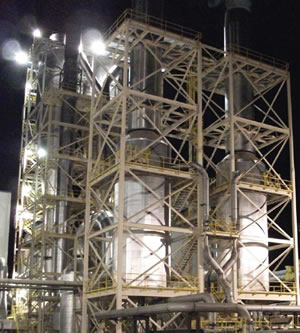TurboSonic Wins New Contracts and Increases Backlog
TurboSonic Technologies (TSTA – $0.42), that designs and markets air pollution control technologies for industrial applications, received a $3.6 million order for a Catalytic Gas Treatment (CGT) installation for volatile organic compound (VOC) emissions reduction. The contract from a particleboard producer, will reduce the formaldehyde and methanol emissions to provide compliance with US EPA regulations for the Plywood and Composite Wood Products industry.
It’s good to know that TurboSonic’s CGT technology was selected over thermal oxidation, the traditional solution for VOC emissions control. The reason for this is because CGT eliminates the need for the costly combustion of non-renewable natural gas, thus avoiding the associated greenhouse gas emissions of CO(2), nitrogen oxides (NO(x)), and methane.
Additionally, CGT, unlike thermal oxidation, offers “instant on/off” operation with no standby costs, which can be substantial at a thermal oxidizer operation. And unlike biological treatment systems, CGT has no sensitivity to temperature (which can kill essential bacteria required in biological treatment systems) thus broadening the application for CGT technology.
All these advantages make customers decide to choose TurboSonic’s CGT technology.
More Orders and Increasing Backlog
This latest contract adds to two orders valued at $2.2 million which the Company received a few weeks ago from a steel producer to install a SonicKleen Wet Electrostatic Precipitator (WESP) for reduction of particulate matter and control of visible emissions.
The SonicKleen WESP technology offers operators reduced maintenance, maximum uptime and reliability, and superior performance for reduction of fine particulate and acid mist emissions. The technology can be applied in a wide range of industries. In fact, TurboSonic has recently received orders from customers in the chemical, waste-to-energy, steel, and wood industries in North and South America and Europe.
All these substantial orders have caused the Company’s backlog to grow substantially.
Conclusion
The growth potential for TurboSonic is obvious:
- It’s a given that emissions regulations continue to become stricter all over the world. For example the Portland Cement MACT and Boiler MACT regulations in the U.S. This will substantially increase the demand for technologies that reduce emissions in the following years as companies will have to comply.
- TurboSonic, with its patent protected and cost efficient WESP and CGT technology is at the forefront of air pollution control technology.

